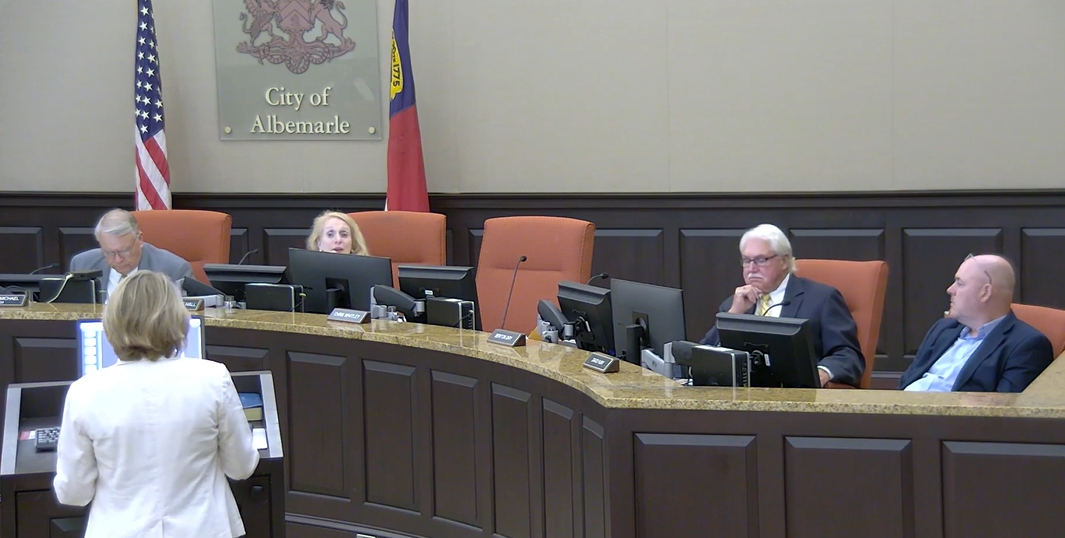DG MARTIN COLUMN: Lift up your gates and sing — a new book about Jerusalem
Published 9:50 am Tuesday, June 11, 2024
|
Getting your Trinity Audio player ready...
|
The city of Jerusalem is again at the center of the world’s attention.

D.G. Martin
Today it is the capital of an embattled country, Israel, which is at war with its neighbor in Gaza. It is in mounting conflict with forces alongside and inside its borders that are sponsored by powerful nations.
It is also a major shrine and holy place for three of the world’s major religions. All three have claims in Jerusalem, its history, and to some of its holy sites.
Trending
In North Carolina, as in other places throughout the world on Sunday mornings, churchgoers will be singing about Jerusalem.
“Jerusalem, Jerusalem! Lift up your gates and sing, Hosanna in the highest. Hosanna to your King!”
Preachers in North Carolina and all over the world will be reminding congregations of Jesus’s activities in Jerusalem, preaching, healing, finding followers and ultimately being executed and buried there, before reappearing and inspiring others to follow his teachings and example.
With Jerusalem in the center of things and the activities of Jesus so important to so many, a book about the city’s history and its changing composition is welcome. “Jerusalem through the Ages: From Its Beginnings to the Crusades” is published by Oxford University Press, which asserts that the new book is “An all-encompassing survey of a city’s physical presence and the historical record it reveals.”
The book’s author is UNC-Chapel Hill’s Jodi Magness, Kenan Distinguished Professor for Teaching Excellence in Early Judaism.
Magness is a scholar and author of other books about Biblical times including “Ancient Synagogues in Palestine,” “Masada: From Jewish Revolt to Modern Myth,” “The Archaeology of Qumran and the Dead Sea Scrolls,” and “The Archaeology of the Early Islamic Settlement in Palestine.”
Trending
Magness begins her history at the time of David’s conquest of a small village near a spring called Gihon in about 1000 BC (or BCE in modern parlance).
After David’s conquest, the “small village” became “the city of David” and a united monarchy of David and his son Solomon ruled. Magness describes the temple Solomon had constructed on the high ground in Jerusalem called the “Temple Mount.”
Magness then guides her readers through 2,000 years of Jerusalem’s history concentrating on changes to the physical landscape, such as the construction of important buildings, walls, towers and monuments or the destruction of such assets due to war or neglect.
An important early loss was 586 BC when Babylon conquered the kingdom of Judah, destroyed Solomon’s temple, and exiled many of the Jews to Babylon.
After King Cyrus and the Persians defeated Babylon in 539 BC, the exiled Jews were permitted to return to Jerusalem, and reconstruct the temple and the city walls.
Magness writes, “Thanks to the reconstruction of the temple, the Persian period laid the foundation for the increasing importance of Jerusalem in Jewish religious life in the following centuries…”
In 332 BC Jerusalem came under the rule of Alexander the Great and a period of Hellenization began. When Greek leaders tried to outlaw Jewish religious practices, a Jewish rebellion led by the Hasmonean family ensued. Their success led to an independent Jewish kingdom.
Magness writes, “Jerusalem’s elevation from the tiny and impoverished center of a provincial backwater to the capital of the Hasmonaean Kingdom had a significant impact.”
Magness describes the impact of the great builder, Herod the Great, followed by the direct Roman rule, and a series of revolts that resulted in the complete destruction of the temple and most of Jerusalem.
Things changed dramatically. Magness writes, “Constantine’s legalization of Christianity in 313 AD had a profound effect on the Holy Land in general and Jerusalem in particular, which was transformed from a small and insignificant colony on the periphery of the Roman world to one of its most important cities.
There is much more, but for those who want a short summary, Magness includes a three-page timeline as an appendix. For those who travel to Jerusalem, she has included walking tours of the places she mentions in her book.
D.G. Martin, a retired lawyer, served as UNC-System’s vice president for public affairs and hosted PBS-NC’s “North Carolina Bookwatch.”






